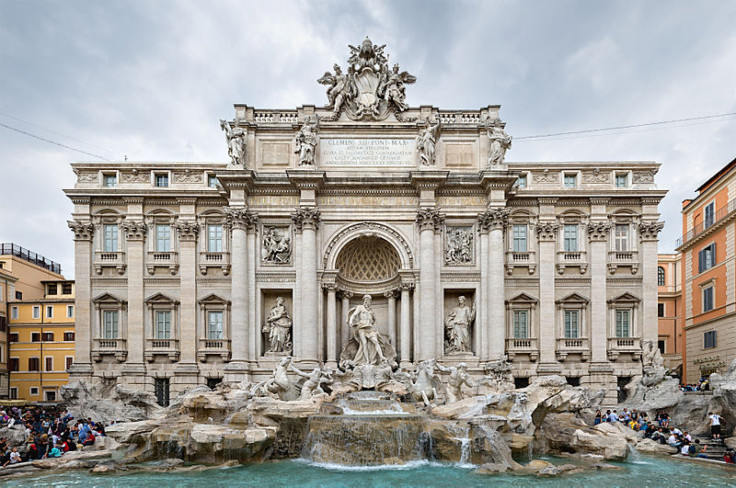Trevi Fountain, Colosseum And Rialto Bridge Getting Facelifts Courtesy Of Italian Fashion Brands

Italian fashion house Fendi will toss a lot of coins into Rome’s famed Trevi Fountain over the next two years -- about $2.93 million worth.
The luxury merchandiser (known for its “baguette” handbags) announced Monday that it will foot the bill for a much-needed facelift of what is arguably the world’s most famous fountain.
Trevi celebrated its 250th anniversary last year, but the occasion reignited concerns that the crumbling baroque masterpiece was suffering from poor management and a lack of funding. Moreover, weather caused parts of its façade to become detached over the summer, leading alarmed authorities to appeal to large companies in the private sector to fund “an act of social patronage.”
Fendi -- which will also fund the $430,000 refurbishment of the Quattro Fontane, or “Four Fountains” -- will clean Trevi’s façade and statues, replace the gilded Latin inscriptions, check the strength of the steel supports, install new pumps and electric works, and waterproof its basin.
One of Rome’s iconic attractions and the setting of Federico Fellini’s 1960 hit “La Dolce Vita,” tourists visit Trevi Fountain for the chance to toss a coin over their shoulders and make a wish. Anyone who does is said to ensure their speedy return to Rome.
Coin-tossing tourists will still be able to visit the landmark throughout its 20-month restoration. When it announced its plans on Monday, Fendi claimed that at least two-thirds of the fountain would remain open at all times.
The fashion brand’s outspoken and often controversial creative director Karl Lagerfeld said Rome’s fountains “are there to glorify water, which is the most important thing in life.”
“It’s a great project, because this fountain is famous in all the world, like the Colosseum or St. Peter’s, and I’m happy that we can all help,” he told the crowd at a press conference.
Lagerfeld said he will produce a photographic collection of famous Roman fountains called “Glory of Water” to accompany the renovation, which is expected to be completed by 2015.
Fendi began as a modest handbag and fur shop in Rome during the tough years between the world wars, and the company’s chairman and CEO, Pietro Beccari, said “there is an element of giving back to the city that has hosted us since 1925.”
But Fendi is not the first fashion house to trade fabric for stone to protect Italy’s chronically underfunded cultural heritage. Last year, Tod’s announced it would restore the Colosseum at a cost of $33.6 million. Similarly, Diesel said it would spend $6.73 million on the restoration of Venice’s Rialto Bridge.
While Fendi’s logos and signs will appear on the fountain during its repair, along with a small plaque upon completion, Tod’s contract gives the company rights to use the Colosseum’s logo for 15 years and to put its own brand on tickets bought by some six million tourists who visit each year.
Rome Mayor Gianni Alemanno said Monday that he hoped donations from Tod’s and Fendi would start a trend.
“Without similar initiatives, we won’t be able to save the cultural memory of our country.”
© Copyright IBTimes 2025. All rights reserved.






















